Planting, growing and caring for hot peppers in the open field
Growing hot peppers outdoors is not an easy task. A heat-loving plant requires a delicate approach and reacts painfully to any changes in climatic conditions. In addition, the juicy and sweet sprouts of hot chili peppers are a favorite treat for various insects.
How to grow strong and beautiful shoots, and then collect a decent harvest from them. Let's figure out what you need to know and how to properly care for hot pepper.
How to choose a variety
The process of selecting seeds for planting should be taken seriously. The main selection criteria are as follows.
- The ripening period is the most important parameter. The growing season for most varieties is 4-5 months, and the length of summer may not be enough for the development of the culture. You should first obtain data on the length of the summer period with a favorable average temperature for peppers in your area. Then correlate with the duration of ripening of a particular variety. Most likely, you will need to acquire an early ripe variety and plant it with seedlings.
- Resistance to viruses, low light and temperature extremes is an important characteristic of the variety. The fact is that pepper does not tolerate a sharp change in temperature and may die. In addition, pests also love to feast on chili peppers, in particular, aphids adore it. Plants with weak resistance will be weakened by constant attacks of parasites and will not be able to produce crops in the garden on time.
- Fruit bitterness and yield are the consumer properties of the crop. The Scoville pungency scale should be used to avoid poisoning from acute inoculation. According to this parameter, the fruits vary from mild to pungent in the presence of capsaicin, which is responsible for the pungency of taste. The yield allows you to plan the estimated volume of product from the sown area.

If you correctly take into account the above parameters, then you can choose the optimal variety for growing in the country.
Important! The growing season for most pepper varieties is 4-5 months.
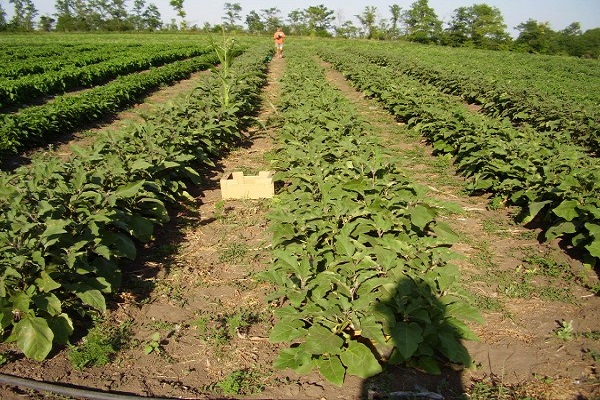
Suitable varieties
Despite the fact that bitter pepper has many varieties, the following varieties are most popular with gardeners.

- One of the most demanded hybrids is Astrakhan 147. This variety is resistant to diseases and vagaries of the weather. Oriented to the southern regions, the growing season is 4 months. Bushes of medium size, yields are above average. The peppers have an attractive elongated shape and moderate pungency.
- Yellow Hungarian is one of the world's most sought after species. The variety ripens in 4 months and is disease resistant. A special feature is the resistance to top rot.The bushes are compact in size, look good both in the beds and in the flower beds. The fruits have a characteristic yellow color and an elongated shape. The taste is juicy with a medium degree of pungency.
- The Danube bitter pepper is grown outdoors and is widely known for its high yield. Resilience allows him to fight both diseases and climate changes, drought. The growing season is 3.5 months, which allows harvesting even in temperate climates. A feature of hot peppers when grown is the height of the bushes, which is more than 1 meter. The fruits are large, elongated, red or green in color.
- The Impala variety is a hybrid specially created for difficult climatic conditions. It is distinguished by an extremely short ripening period, just over 2 months. Planting and caring for the variety is easier due to its high resistance to various diseases, including the tobacco mosaic virus. It is also distinguished by a balanced spicy taste and an elongated, graceful shape of the fruit.
- Ukrainian chili pepper is extremely popular with summer residents. It is highly resistant to most known diseases and viruses. The growing season is 4 months. The yield reaches 1.5 kg per 1 square meter of crops. Loves the sun, does not grow in the shade. The planted seedlings can withstand a sharp change in temperature.
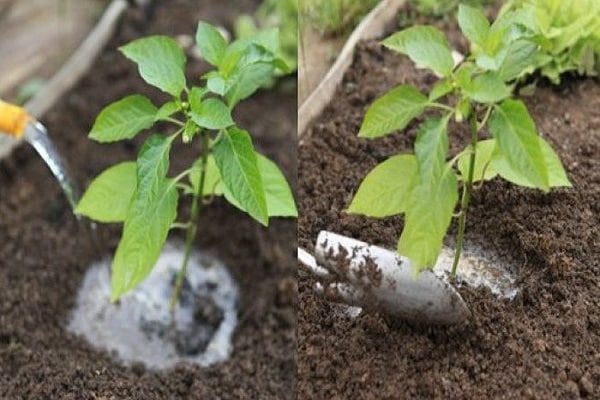
Purchasing choices should not be limited to the listed varieties. Knowing the criteria, you can independently choose good plants for your site.
How to plant correctly
Because chili peppers love warmth, they often don't have enough time to harvest in temperate climates. Therefore, it should be planted in open ground using seedlings. The following steps are taken.

- First, the seeds must be germinated at a temperature of at least 25 degrees. To do this, they are wrapped in wet cheesecloth and removed to heat for 7 days. This must be done no later than the beginning of March.
- Next, you need to prepare boxes with soil filler, in which the seedlings will then be grown. At the bottom there is a drainage mass consisting of fragments of brick, expanded clay rock or foam. The components are mixed. The next layer is a layer of sod with compost and the addition of sand. Before forming plantings, it is better to disinfect the soil. The surface needs to be leveled and tamped a little, fertilized. Then make indentations in it for planting seeds of about 1 cm.At what distance to plant, is determined individually, but the distance is more than 5 cm.
- Germinated seeds are placed in the ground and irrigated with water. The containers should be covered with transparent film and placed in a warm place so that the culture can form the first shoots. When sprouts begin to appear on the surface, the containers must be transferred to a well-lit place and the film must be removed from the surface.
- When leaves appear on the stems of plants, the shoots dive. To do this, you need to carefully pull out the stems with a knife blade, trying to damage the root as little as possible. Then they are planted in peat pots. Watering plants can be carried out with settled heated water.
- Peppers are transplanted into open ground after 2 months of cultivation in peat pots. First you need to check if the pepper is ready for the street, for this you need to put a couple of bushes on the windowsill and see how they react to the temperature. Then we plant the contents of the pots in the ground.
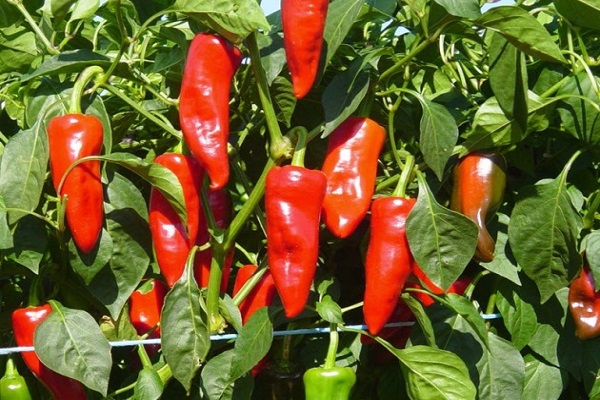
In order for the formation of bitter pepper to be successful, it must be constantly looked after. The culture requires frequent watering. It is also important to regularly loosen the soil at the roots and remove weeds. Before planting hot peppers, you need to feed the soil with fertilizers.
When sweet and bitter peppers are planted close to each other, pollination can occur, the taste of the fruit changes.

Outdoor Pepper Care
Proper care of hot peppers is the key to a good harvest. The following guidelines should be observed.
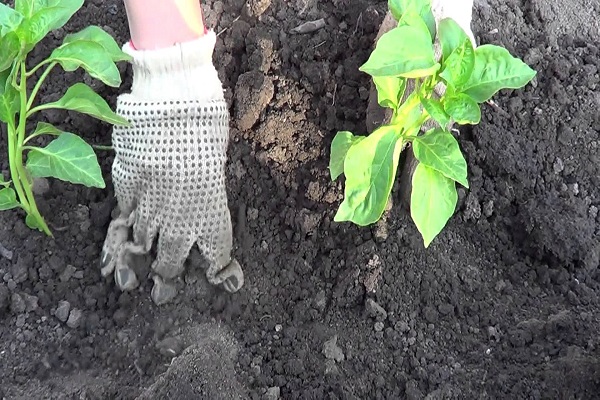
- Monitor soil moisture. Optimally, it should be moderately moist. Caring for hot peppers involves gentle watering. It is not recommended to overdry, but it is also impossible to fill in. Lack of moisture leads to degeneration of the size and shape of the fruit. Stems lose flexibility, become brittle in the place where they were planted. Watering is desirable with warm water.
- Provide good illumination of crops. Planting a vegetable is best done on the south side of the site. It is important to ensure that the plants are well lit throughout the day and do not fall into the shade. In insufficient light, the stems are pulled out. The plant weakens, begins to lose side shoots.
- Care in compliance with the temperature regime. It is important to understand that the development of a pepper culture stops at 13 degrees, and when the temperature drops to 0 degrees, the plant dies. In climatic zones, where temperature drops are tens of degrees in a short time, ovaries and buds die off. Heat is also dangerous to culture... Outdoor care at temperatures above 25 degrees involves shading crops. To preserve the crop in unfavorable temperatures, crops must be covered with foil or special tunnels must be used.
- The chili peppers stretch out as they grow. Garters are used to reduce the stress on the trunk. To do this, a stick is stuck into the soil along the height of the plant, to which the stem is tied with a rope.
- Cupping allows for the correct proportions of the plant and increases the yield when growing hot peppers outdoors. Pinch the stem if it grows above 25 centimeters. Side shoots are also removed, leaving only the 5 strongest ones. In addition, the first flower should be cut off so that the plant spends energy on forming a bush, and not a fruit.

Proper cultivation and care of peppers is a rather laborious task. But without this, you cannot get beautiful and juicy fruits that you can not only enjoy yourself, but also treat your friends.
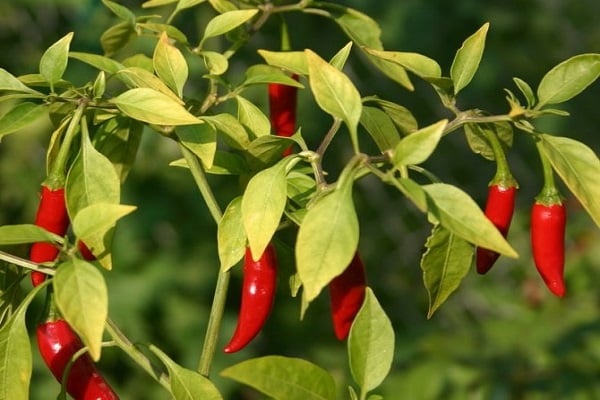
Useful Tips
- You can grow hot peppers if you listen to the recommendations of experienced gardeners. It is advisable to follow these steps to ensure good growth and yield.
- It is important to feed the crop with the right fertilizers. Before flowering, preparations containing nitrogen are added to the soil. After the flowers appear, they are fed with additives with phosphorus and potassium.
- A feature of the simultaneous planting of sweet and bitter peppers in the same area is cross-pollination. So, if you plant two crops side by side, then the fruits of sweet pepper will taste bitter. In order to avoid this, crops are planted further. Additionally, other plants are planted between the beds. You can also plant sweet and hot peppers on different sides of the house.
- Cultivation rules dictate that hardened peppers should not be harvested, but hardened. The soft-textured fruit is unripe and is harvested for the cultivation of hot peppers, not for consumption.
- Chili peppers should be picked with the stalk. Then they need to be stored in a dry place at about 20 degrees. Then the pepper will ripen and its taste will improve significantly.
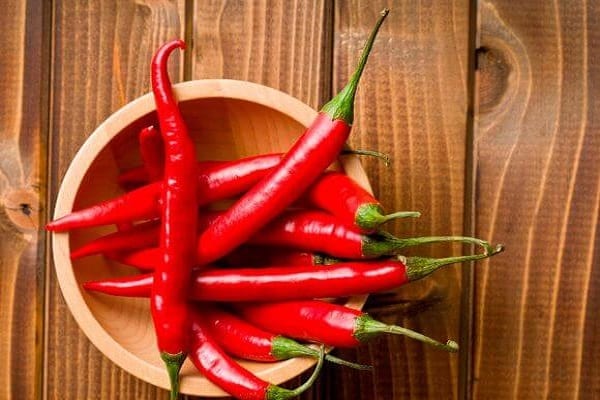
If you follow the above tips, you can both grow hot pepper for yourself and for sale, because the rules will avoid annoying mistakes that lead to loss of crops.

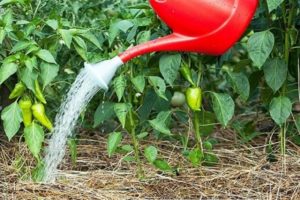


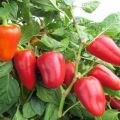
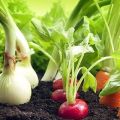
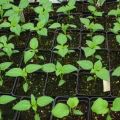
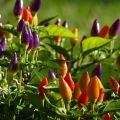
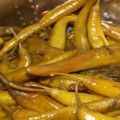
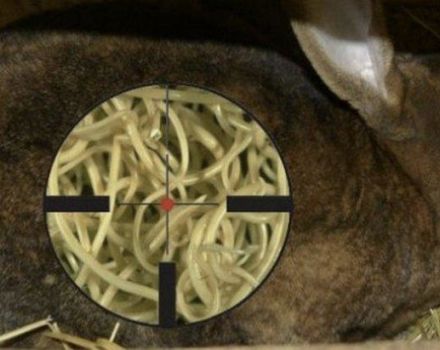
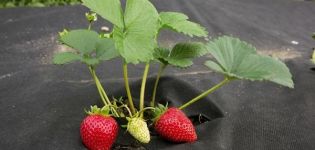
Such pepper can be grown on the windowsill, it is not picky. But if there is a place, then it is imperative to plant further from simple bell peppers, otherwise they will all be bitter, have already been tested more than once.